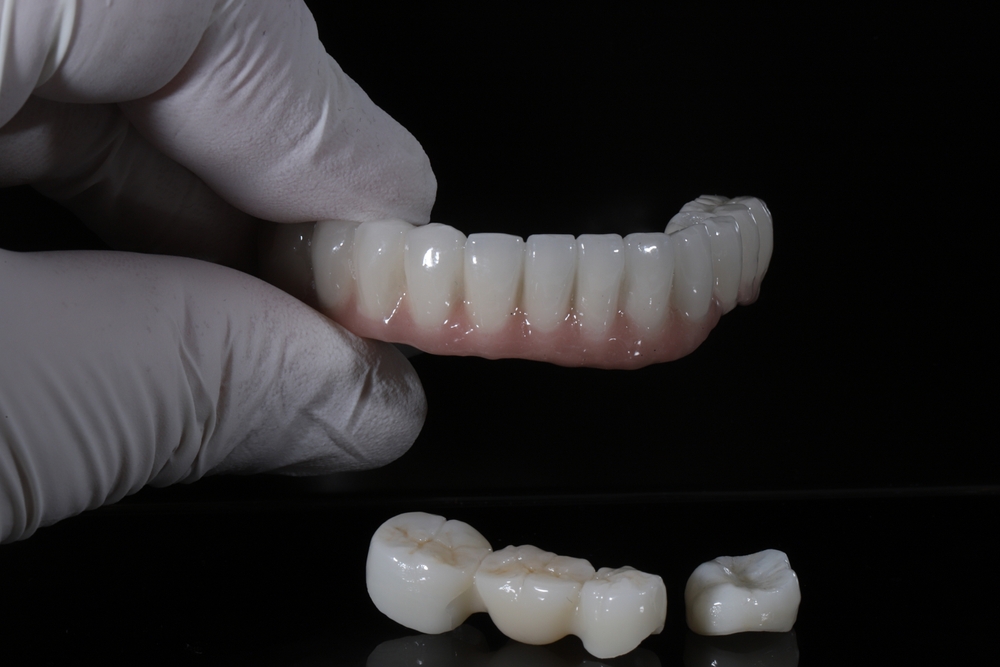Dental crowns are a popular solution in cosmetic dentistry for restoring the beauty and function of a damaged or discolored tooth. Designed to look natural and feel comfortable, crowns help patients regain confidence in their smiles. However, even with this protective covering, your tooth is not completely immune to dental issues. One of the most common questions we hear from our patients is: Can you still get a cavity under a crown? The answer may surprise you, and understanding how it happens is key to protecting your investment in a beautiful, healthy smile.
In This Blog:
- Understanding Dental Crowns in Cosmetic Dentistry
- How Cavities Can Form Beneath a Beautiful Crown
- Subtle Signs of Decay Under a Crowned Tooth
- How Dentists Diagnose and Treat Decay Under a Crown
- Tips to Prevent Cavities Under Crowns
Understanding Dental Crowns in Cosmetic Dentistry
In cosmetic dentistry, dental crowns do more than protect damaged teeth, they play a vital role in enhancing the appearance of your smile. A crown is a custom-made cap that covers the visible part of a tooth, improving its shape, color, and alignment. Whether you’re dealing with a misshapen tooth, severe discoloration, or a crack that affects your smile’s symmetry, a well-crafted crown can restore beauty and confidence. Crowns are typically made from materials like porcelain or zirconia for a natural, seamless appearance. But while they offer excellent cosmetic benefits, it’s important to remember that the tooth underneath still needs protection from decay.
How Cavities Can Form Beneath a Beautiful Crown
A dental crown may enhance the appearance of your smile, but it doesn’t make your tooth immune to decay. In cosmetic dentistry, we prioritize both aesthetics and long-term oral health, and part of that involves educating patients on how problems can arise beneath even the most natural-looking restorations. Cavities under crowns often start at the margin where the crown meets your natural tooth. If plaque accumulates at this junction, bacteria can slip beneath the crown and begin breaking down the tooth structure underneath.
Factors such as poor oral hygiene, aging crowns, or improper crown fit can create openings for bacteria to enter. Even slight imperfections at the crown’s edge can allow microscopic leakage, known as microleakage, which often goes unnoticed until discomfort arises. That’s why it’s essential to maintain excellent oral care habits and have your crowns regularly evaluated, not just to keep your smile looking flawless, but also to protect the tooth underneath from silent decay.
Subtle Signs of Decay Under a Crowned Tooth
When you invest in a beautiful, natural-looking crown, you want it to not only enhance your smile but also protect your oral health. Unfortunately, decay can still develop beneath even the most aesthetically pleasing restorations and often, the signs are subtle. You might notice increased sensitivity to cold drinks or sugary foods, or feel a slight ache when biting or chewing on the crowned tooth. These symptoms can indicate that bacteria have found a way under the crown.
Aesthetic changes can also be a clue. If you notice a dark shadow at the gumline or discoloration near the edge of the crown, it may be time for an evaluation. Swollen or irritated gums surrounding the crown, persistent bad breath, or a bad taste in your mouth can also suggest a problem beneath the surface. Because crowns are designed to look seamless, decay often hides behind their beauty, making regular cosmetic dental checkups crucial for early detection and prevention.
How Dentists Diagnose and Treat Decay Under a Crown
At a cosmetic dental practice, preserving both your oral health and the beauty of your smile is always a priority. If there’s a concern about a cavity beneath your crown, we begin with a thorough evaluation. This includes digital X-rays to detect hidden decay and an exam of the crown’s fit and surrounding gum tissue. Even the most visually flawless crown can conceal damage underneath, so precision in diagnosis is key.
If decay is found, our approach balances health and aesthetics. In minor cases, we can carefully remove the crown, treat the decay, and craft a new, custom crown that blends seamlessly with your smile. If the damage extends deeper, root canal therapy may be needed before restoring the tooth cosmetically. For teeth that can’t be saved, we offer advanced solutions like dental implants that restore both function and appearance. Whatever the treatment path, our goal is to maintain your confidence while addressing the problem thoroughly.
Tips to Prevent Cavities Under Crowns
Maintaining a radiant, healthy smile goes beyond aesthetics—it’s about preserving the longevity of your dental restorations, too. To prevent cavities from developing under your crown, it’s essential to commit to excellent daily oral hygiene. Brush at least twice a day using a fluoride toothpaste, and don’t neglect the gumline around your crowns, where plaque tends to accumulate. Flossing is equally important to keep the area between your teeth and crown margins clean.
We also recommend using an antibacterial or fluoride mouth rinse to give your teeth an extra layer of protection. Avoiding sugary and acidic foods can minimize your risk of decay and help protect the natural tooth beneath the crown. Lastly, keep up with regular dental visits, where we can monitor your crown’s condition, check for any signs of leakage or decay, and perform professional cleanings that reach the spots your toothbrush might miss. These steps not only preserve your oral health, they also keep your cosmetic results looking their best.
Conclusion
A dental crown is an investment in both your oral health and the beauty of your smile. But even the most carefully crafted restoration still needs proper care to remain effective. Cavities under crowns can develop quietly, so maintaining excellent hygiene and visiting your cosmetic dentist regularly is key to keeping your smile flawless and healthy.
If you’re experiencing sensitivity, discomfort, or simply want to ensure your crowns are in top condition, schedule a consultation with us today. Let’s keep your smile as stunning and strong as the day your crown was placed.



